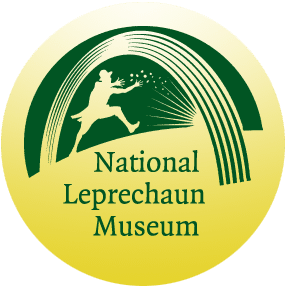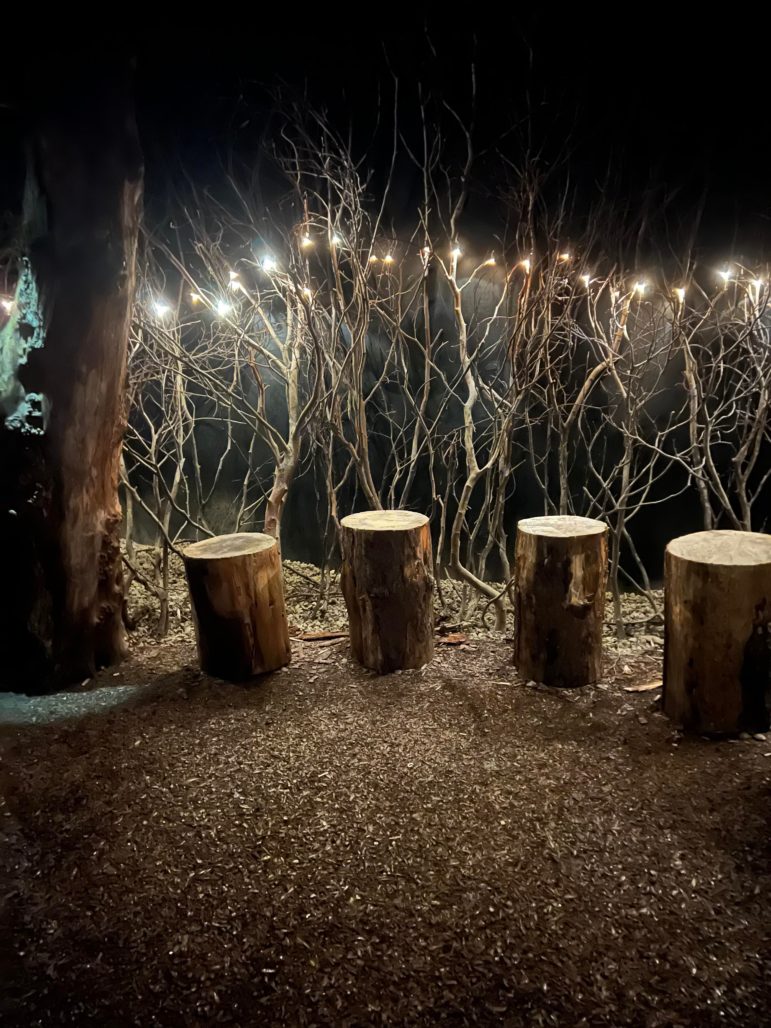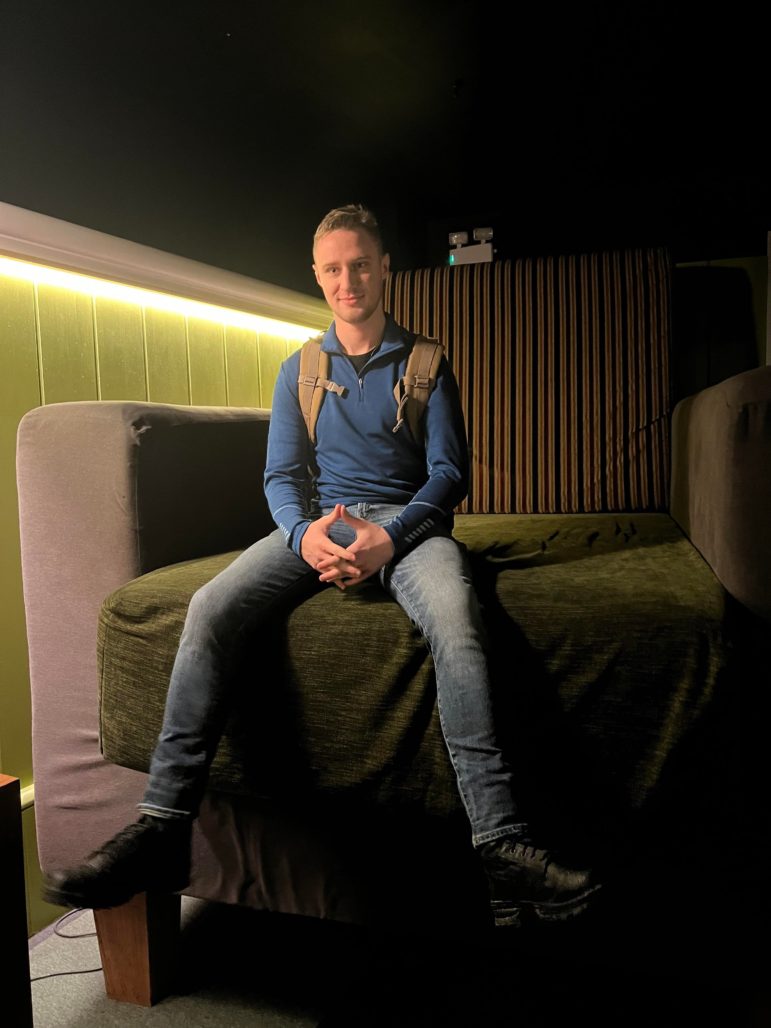
Today’s offering comes to us from Noelle K. Bowles. She teaches literature and writing courses at Kent State University at Trumbull, specializing in nineteenth-century British literature, the fantastic, creative writing, women’s literature, and the basic writing courses everyone loves to hate. When not preparing class materials or grading papers, she spends her time kissing her Frenchie, complaining about cat hair, cooking Indian cuisine, and shaping clay into ceramic monsters… oh, and reviewing television and film.
On my recent trip to Ireland, I noted that my lodging was about a block away from The National Leprechaun Museum of Ireland, and I thought: What the heck; why not? My son agreed to go along. We both thought it would likely be a silly, tourist-trap waste of money, but it was actually one of the best experiences of our ten-day visit.

National Leprechaun Museum logo [courtesy]
It is not a museum in the common conception, but a 45-minute guided experience of Irish culture and mythology with the time divided between stories of leprechauns and older tales of the Tuatha Dé Dannan (two-wa day dannan), deities and heroes of legend.
The experience begins with the group convening in a lobby area whose walls are lined with photos of Irish authors whose work deals with Irish myths, pop-culture representations of leprechauns, and glass-enclosed displays of traditional leprechaun garb.
Our guide, Paudie, informed us that the American concept of green-suited leprechauns is Hollywood fallout from the 1959 Disney film Darby O’Gill and the Little People. Leprechauns, in Irish tradition, dress in browns, but to give the leprechaun King Brian (Jimmy O’Dea) status and make him stand out in the film, the designers dressed him in green. The film, and the advent of Lucky Charms breakfast cereal and its mascot in 1964, sealed the connection between green and leprechauns in the American imagination (mistaken though we be).

A display at the Leprechaun Museum [Photo Credit: NKB]
The tour then proceeds through a slightly disorienting tunnel and into a dimly lit room of giant furniture, so that guests can experience being “little people” themselves. The lighting grows darker from there, creating the sense that visitors have entered the sidhe (pronounced “she”) – the underground world of the Irish fairy folk where they retreated with the Christianization of Ireland.
From there, the tour leads to a room with a large round bench enclosing a lighted gravel ring in which a lump of “gold” rests on a post in the center. Here our guide recited a charming sample of a leprechaun tale before leading us into the final room. The last room is designed as a nighttime forest, and guests take seats on tree stumps to hear a longer tale: ours was The Wooing of Étain from the Mythological Cycle of Irish tales.
As the tour wrapped up, our guide drew our attention to the interlacing triquetra pattern on the ceiling. He noted that it is far older than Christianity which has labeled it as the “trinity knot.” In its Celtic origin, it represents the tri-part Mórrigan. Our guide did not name her and instead noted that it was a triple goddess symbol. Celtic art is nearly all symbolic rather than representational, and elements of the natural world, when present, are always abstracted.

The author’s son [not the size of Leprechaun] demonstrates sitting in a chair at leprechaun scale [Photo Credit: NKB]
While not deliberately Pagan in its focus, the experience did not “Christ-wash” the Irish tales, meanings, or symbols. We came away with a better understanding of the leprechaun’s characterization in Irish culture, and I recommend a visit to anyone headed to Dublin.
The website notes that tour size is limited and booking in advance is recommended via their website and the museum also has a presence on Facebook.
The Wild Hunt is not responsible for links to external content.
To join a conversation on this post:
Visit our The Wild Hunt subreddit! Point your favorite browser to https://www.reddit.com/r/The_Wild_Hunt_News/, then click “JOIN”. Make sure to click the bell, too, to be notified of new articles posted to our subreddit.
